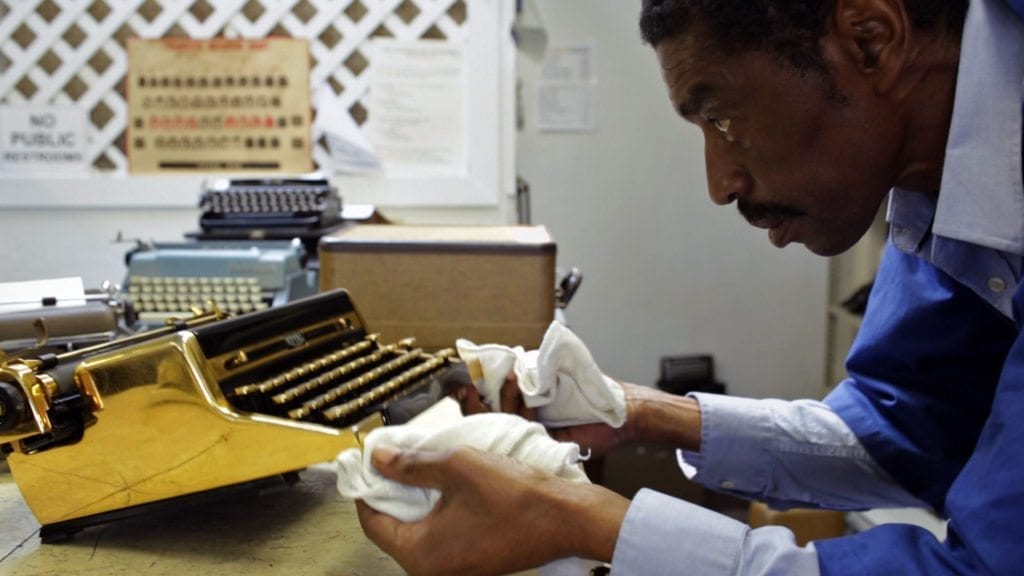
The Logline: Screenwriter’s best friend
Over the years, the importance of a strong logline has been drilled deeply into my brain. But the logline is still a mythical beast – colleagues often ask me Exactly what is a logline? and Why do you love them so damn much?
A logline isn’t a tagline, and it isn’t a synopsis. It’s something very special – and it could be the most important trick of the screenwriting trade that you ever learn.
When writing a screenplay, your logline should be the first thing you write, and the final piece you perfect. You should refer to it throughout the entire scriptwriting process. Its contents should inform every character’s intention and interaction. Simply put, the logline is the first thing you need to get right in your scriptwriting process, as all future success depends on it.
No pressure.

If your logline is weak, your story may flounder. You may experience plot drift and your characters might act out of character. The logline is the tool you come back to time and time again when asking yourself questions about your characters and plot.
After the writing process, your logline increases in importance. These innocuous sentences are indispensable in selling your script to potential readers. If you master the art of the logline, it can take you that much closer to selling your story.
View your logline as your script’s foundation. A strong logline supports your story and helps it weather any storm. An improperly constructed logline can bring about a complete story collapse. Although only one or two sentences in length, the logline packs huge value. View logline writing as an independent skill that requires just as much concentration and dedication as all the other elements of your script, if not more. If you get your logline right, you will have created a tool that can serve you throughout all the stages of development.

So what is a logline, anyway?
Loglines first came into play in the golden age of Hollywood. Making movies was a license to print money, and producers were hungry to find the next big hit. Loglines would be printed on the spine of a screenplay so industry folks could quickly discern if the script contained the next Casablanca, or another Plan 9 from Outer Space.
Although loglines are no longer included in the core script, they’re just as important in modern filmmaking.
A logline shouldn’t give away the whole plot of your screenplay; it should be viewed as an amuse-bouche to whet the appetite and leave them salivating for more.

Anatomy of a logline
- The logline comprises one or two sentences that summarize the first and second acts of your screenplay.
- It should include the premise, emotional insight into your characters, and hints to your protagonist’s motivation.
- It should translate just as well in spoken language as on paper. It’s the tool you use when you get those 2-minute elevator pitch opportunities.
How to use your logline
- Your logline is a tool to sell your story to potential readers.
- You can use it to start in-person conversations about your script.
- You will use it in your script cover letter.
- It’s a valuable writing tool you can refer back to time and time again to assure all your plot points are relevant to your story.
- You can and should use it to maintain focus throughout the screenwriting and editing processes. When in doubt, ask, “What did I say in my logline?”

Making your logline work for you: what it needs to achieve
- First and foremost, your project needs to have a killer title that sums up the story in a few words.
Herding Cats - Your logline needs to tell the reader who the protagonists of your story are. Don’t use their names; just describe who they are.
A group of street cats - We also need to understand what the ambitions of your protagonists are.
A group of street cats are looking for a furever home. - Finally, we need to understand their motivation. What is the problem they need to solve? Why have they been driven to these actions?
Herding Cats: A group of street cats are looking for a furever home, when an evil corporation sets about gentrifying their neighbourhood, putting their way of life in danger.

According to late, great screenwriting maven Blake Snyder in his Save the Cat screenwriting book, there are four devices that your logline must contain:
- There has to be some irony in the pitch. It has to evoke a reaction in a reader which makes them want to find out more.
- It must evoke a story and a strong image to the reader/listener.
- It must speak to a certain target market, so producers can gauge potential profits from investing in the project.
- It must include a killer title that not only explains in a nutshell what the work is about but also appeals to both the target audience as well as marketing executives.

Still confused?
When sitting down to write your logline, consider the following:
- Who is/are the protagonist(s)?
- What are they doing?
- Where are they doing it?
- When are they doing it?
- Why are they doing it?
- How are they doing it?
Write your answers down in longform. Be truthful – really get into the heads of your characters.
Herding Cats: A gang of street cats. They have to find a new place to live. An evil corporation is gentrifying their neighbourhood. They need to move asap. Because some of the workmen injured one of the young kittens and it’s no longer safe. As a gang together, using whatever tools they find in the streets – and with the kindness of some human strangers – they adventure through the city.
Now take this rough sketch and polish it until it pops.
Herding Cats: A group of NYC street cats needs to find a new furever home after an evil corporation gentrifies their neighbourhood and puts their way of life in danger. 
Practice makes perfect!
Write loglines for imaginary screenplays or movies that already exist. Bore your friends and annoy your neighbours, but make sure you get feedback. If your newest pitch victim wants to read more, analyze what you did with that particular logline and do it again and again. Once you get positive results, start using your loglines on movie industry contacts to gather even more reactions.
Share your loglines with us!
We’d love to hear your loglines and your thought process behind them.








GK
/
Is it okay to include the title of the script in the logline?
March 9, 2018Film Daily
/
No, the title is technically not part of the logline, nor should it be included by default.
March 12, 2018